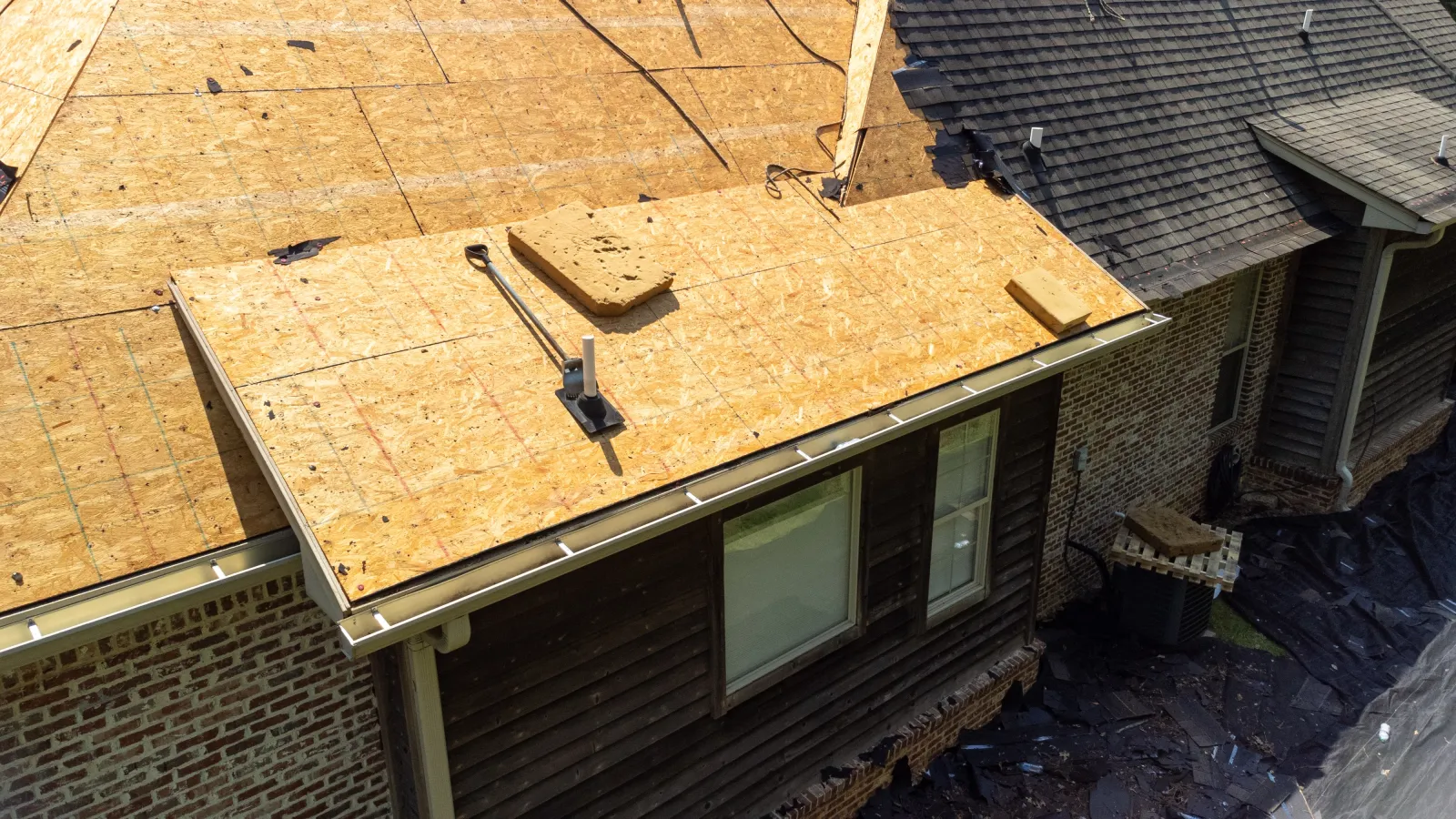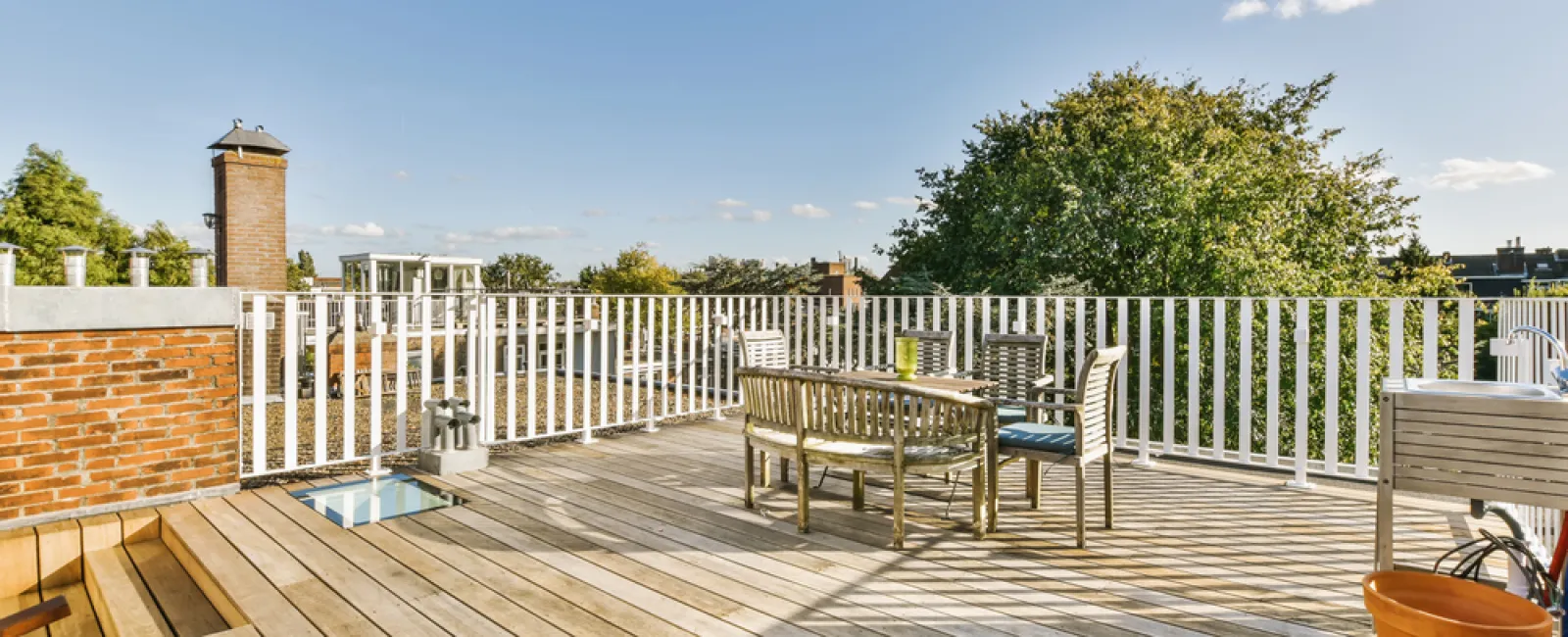When you're evaluating the security and integrity of your roof,
understanding the intricacies of various components is crucial. One key element
in roofing is the roof deck, also known as the roof sheath. This component
forms the backbone of your roofing structure, playing a critical role in the
safety and integrity of your home.

What is the Roof Deck?
The roof deck is the foundational layer of your roof's structure, serving as the base upon which all other roofing materials are installed. Located directly over the rafters, the roof deck must be robust enough to support the weight of shingles, underlayment, and any additional roofing components, while also withstanding environmental stresses such as wind, rain, and snow.
Constructed primarily from materials like plywood or oriented
strand board, the roof deck provides essential strength and stability. Plywood
offers flexibility and durability, while OSB is valued for its uniformity and
cost-effectiveness. Both materials are chosen for their ability to maintain the
roof's structural integrity over time. In the past, planks were commonly used
for roof sheathing. Planks are rarely used now, due to their cost and the fact
that they are susceptible to leaks.
Types of Roof Sheathing
Roof sheathing provides essential support and a solid foundation for roofing materials like shingles. This layer also enhances structural strength, waterproofing, and insulation.
There are two primary types of roof sheathing: open and closed, also known as solid. Open sheathing involves spaced boards, commonly used in structures with wood shingles or shakes. This type allows for ventilation but may not offer the same level of support as closed sheathing. Those who opt for open sheathing often opt for roofing systems that utilize metal or tile, as these have the structural capacity needed for open sheathing.
Closed sheathing, more common in modern homes, uses solid sheets
of materials like plywood or OSB. This type provides a continuous, strong
surface, ideal for supporting most roofing materials. It works well with
composition roofing, built-up roofing, metal, tile, and shingle roofing.
Material Options for Roof Sheathing
Choosing the appropriate material for your roof sheathing is crucial for its longevity and performance. Plywood and oriented strand board (OSB) are the most common choices due to their durability and affordability.
Plywood is renowned for its strength and flexibility. Its layered construction makes it resistant to warping and provides excellent nail-holding capabilities. Available in various thicknesses, plywood can be tailored to meet specific structural requirements and local building codes.
Oriented strand board is another popular option, known for its cost-effectiveness and uniformity. Made from compressed wood strands and adhesives, OSB offers similar strength to plywood but at a lower price point. However, it is more susceptible to moisture damage, so proper installation and sealing are essential.
In some specialized applications, metal or composite boards may
be used. These materials provide superior strength and fire resistance, making
them ideal for specific structural needs. Although less common for residential
projects, they offer additional resilience and durability.
Protecting Your Roof Deck
Safeguarding your roof deck from the elements is paramount for its longevity and performance. Moisture poses the greatest threat, potentially leading to rot, mold, and even structural damage. To effectively protect your roof deck, several key measures should be implemented.
First, ensuring proper attic ventilation is essential. Adequate ventilation helps to minimize heat buildup and reduce moisture accumulation, which can extend the lifespan of your roof deck. Additionally, installing a high-quality underlayment between the roof deck and the outer roofing material serves as an effective barrier against moisture infiltration.
Regular inspections and maintenance are also crucial. By routinely checking your roof deck, you can spot early signs of potential issues such as leaks, water stains, or other damage. Early detection allows for timely repairs, preventing small problems from escalating into more significant and costly damage.
Another critical measure is sealing and weatherproofing. Properly sealing joints and seams can prevent water ingress, while weatherproof coatings add an extra layer of protection against the elements.
Lastly, consider the impact of nearby trees and vegetation.
Overhanging branches can drop leaves and debris onto your roof, leading to
moisture retention and potential damage. Keeping your roof clear of debris can
go a long way in protecting your roof deck.
Signs Your Roof Decking Needs to Be Repaired or Replaced
Recognizing the signs of a compromised roof deck is vital for maintaining the structural integrity of your home. Here are some indicators that your roof decking may need attention:
• Sagging roof: A noticeable dip in your roofline
often signals weakened or damaged decking, which could be due to moisture
infiltration or structural issues.
• Leaks
and water stains: Persistent
leaks or water stains on your ceiling can indicate that your roof deck is
allowing moisture to penetrate through.
• Increased
energy bills: Unexpectedly high energy bills may result from poor
insulation caused by damaged decking, which allows air to escape and forces
your HVAC system to work harder.
• Visible mold: Mold or mildew in your attic or on your ceiling often points to moisture buildup, which could stem from a compromised roof deck.
If you notice any warning signs, it's important to reach out to a roofing professional right away. The longer you wait to address these issues, the more time they have to blossom into more widespread—and expensive—problems. The team at Master Roofers can help. Serving clients throughout New Hampshire, Massachusetts, and Maine, we're here for your roof installation and repair needs. Contact us online or call us at (603) 623-4973 .
Learn more about your roof with our guide to the anatomy of a roof.

